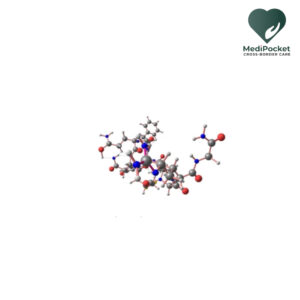Don’t you feel sudden thirst and constant urination but don’t know exactly what the condition is? In the following article, we will discuss that certain disease that causes the mentioned symptoms. The disease known as diabetes insipidus (DI) is characterised by increased thirst and urine. It is brought on by an inadequate or nonexistent reaction to the hormone vasopressin, also known as antidiuretic hormone or ADH, which controls the body’s water balance. As a result, those who have DI create a lot of diluted urine, which, if not well controlled, can cause dehydration.
There are usually two types of diabetes insipidus, central diabetes insipidus (CDI) and nephrogenic diabetes insipidus (NDI).
Central diabetes insipidus (CDI)
A kind of diabetes insipidus (DI) called central diabetes insipidus is brought on by a lack of vasopressin release or production from the pituitary gland. Vasopressin, sometimes referred to as antidiuretic hormone (ADH), is a hormone that manages the quantity of water that is reabsorbed by the kidneys to maintain the body’s water balance. Vasopressin production is inadequate in central DI, which causes excessive urination and dehydration.
A number of things, including damage to or dysfunction of the pituitary gland brought on by a tumour, surgery, radiation treatment, or a head injury, can result in central DI. Central DI may occasionally be inherited genetically from one or both parents.
Symptoms
The symptoms of central DI include
- increased thirst and urine,
- dehydration, which can lead to dry mouth,
- weariness,
- dizziness, and confusion.
People with central DI may need to urinate frequently and may need to wake up in the middle of the night to use the restroom because they produce huge amounts of diluted urine.
Nephrogenic diabetes insipidus
Nephrogenic diabetes insipidus is a rare condition that makes the kidney not respond to the hormone called Antidiuretic hormone (ADH). ADH instructs the kidneys to reabsorb water and concentrate the urine, which aids in controlling the body’s water balance. Due to the kidneys’ resistance to ADH’s effects, NDI patients experience increased thirst and urine.
NDI comes in two types: congenital and acquired. Congenital NDI is a hereditary disorder that manifests at birth and is brought on by changes in the genes that produce proteins involved in the kidneys’ ADH signalling. Due to kidney damage from some drugs, chronic renal disease, and other factors, acquired NDI can happen later in life.
Symptoms
- Excessive thirst (polydipsia)
- Urination (polyuria)
- electrolyte imbalances
- dehydration.
- Fatigue,
- irritability, and
- disorientation may also be present.
NDI can result in developmental delays and failure to thrive in babies and young children.
Causes
As diabetes insipidus is of two types, each types has their own distinct causes.
Central diabetes insipidus
Damage to the hypothalamus or pituitary gland, both of which are found in the brain and play a critical role in the body’s capacity to create and regulate hormones, including antidiuretic hormone (ADH), also known as vasopressin, results in central diabetes insipidus (CDI). By telling the kidneys to reabsorb water and concentrate urine, ADH aids in controlling fluid balance. ADH production or release can be interfered with by damage to the hypothalamus or pituitary gland, resulting in central diabetes insipidus. Causes include,
- an injury to the head
- brain or pituitary gland tumours
- brain infections or inflammation of the tissues around
- specific genetic disorders
- Surgical pituitary gland removal
Nephrogenic diabetes insipidus
A kidney issue that prevents the kidneys from responding to ADH properly is the root cause of NDI. This may be brought on by genetic mutations, kidney damage from specific medications, or other underlying medical conditions. Possible NDI causes include:
- Congenital NDI: A hereditary disorder that manifests at birth and is brought on by changes in the genes that produce proteins involved in the kidneys’ ADH signalling.
- NDI acquired: This might happen later in life as a result of kidney damage from specific drugs (such lithium), chronic renal disease, or other kidney-related diseases.
Gestational DI, a transient form of DI that happens during pregnancy, may occasionally occur. This results from a breaking down-causing enzyme produced by the placenta.
Diagnosis
A detailed analysis of a person’s medical history, symptoms, and physical examination, as well as a number of diagnostic procedures, are required for the diagnosis of DI.
Physical examination and detailed medical history-taking
A doctor will normally start the diagnosis process with a physical examination and thorough medical history. They may also enquire about any family history of DI or other endocrine diseases, as well as symptoms like increased thirst and urination. They will check for symptoms of dehydration, check blood pressure, and possibly even perform a neurological assessment during the physical examination.
Urine tests
For DI, urine tests are a critical diagnostic technique. A urine osmolality test, which gauges the amount of particles in the urine, may be prescribed by a physician. Urine from people with DI is frequently less concentrated in particles and more diluted than usual.
Test for water deprivation
The water deprivation test is a crucial diagnostic procedure for DI. A person is requested to refrain from drinking any water for several hours during this test while their urine production, blood pressure, and body weight are tracked. Even as they get increasingly dehydrated, a person with DI will continue to have a high urine output and a low urine concentration. The water deprivation test may occasionally be followed by an injection of
Blood tests
Blood tests may also be prescribed to check the levels of electrolytes and hormones like ADH, which can help determine the underlying cause of DI.
Imaging testing
In situations when central DI is suspected, imaging tests like computed tomography (CT) or magnetic resonance imaging (MRI) scans may be utilised to check for any structural anomalies in the pituitary gland or brain.
Treatment
The underlying cause of diabetes insipidus might be central (caused by an issue with the hypothalamus or pituitary gland) or nephrogenic (caused by an issue with the kidneys’ respond to antidiuretic hormone).
The following are some typical therapies for diabetic insipidus:
- Desmopressin: This drug acts as a substitute for the antidiuretic hormone (ADH) that the body cannot produce in sufficient amounts. Desmopressin is offered as an injection, a tablet, and a nasal spray.
- Thiazide diuretics: By increasing the kidneys’ sensitivity to ADH, these drugs can help persons with nephrogenic diabetes insipidus produce less urine.
- Low-salt diet: In some circumstances, a low-salt diet can assist in reducing urine production and symptom improvement.
- Surgery: If a tumour or other structural issue in the brain is the underlying cause of diabetes insipidus, surgery may be required to remove it.
- Fluid replacement: It’s crucial for persons with diabetes insipidus to drink enough fluids to stay hydrated because frequent urination can induce dehydration.
The following article has all the important elements and information about the disease. It is advisable to everyone to look out for possible symptoms because even a simple thing such as increased thirst and urine can indicate the possibility of the mentioned disease.
If you want a clear understanding of diabetes insipidus or even want a second opinion regarding it, then the USA is a best place to consult with an expert and get treatment for it. Now, people of India can access the best second opinion service from the United States through MediPocket world. We have the best doctors from the world’s leading hospitals on board that can provide premium second opinion service virtually. Subscribe and book a consultation with American doctors now!!













